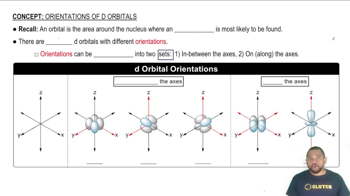Here are the essential concepts you must grasp in order to answer the question correctly.
Electron Configuration
Electron configuration describes the distribution of electrons in an atom's orbitals. It follows the Aufbau principle, which states that electrons fill the lowest energy orbitals first, and is typically represented using a notation that indicates the number of electrons in each subshell (s, p, d, f). Understanding this concept is crucial for determining the electron arrangement in ions and neutral atoms.
Recommended video:
Electron Configuration Example
Ionization and Charge
Ionization refers to the process of adding or removing electrons from an atom, resulting in the formation of ions. The charge of an ion indicates the difference between the number of protons and electrons. For Ti2+, the '2+' signifies that two electrons have been removed from the neutral titanium atom, which has an atomic number of 22, leading to a total of 20 electrons in the ion.
Recommended video:
Transition Metals and d-Orbitals
Transition metals, such as titanium, have partially filled d-orbitals, which play a significant role in their chemical properties and electron configurations. The electron configuration of transition metals can be complex due to the involvement of d-orbitals, especially when forming ions. For Ti2+, the removal of electrons typically occurs from the 4s orbital before the 3d orbital, which is essential for accurately determining its electron configuration.
Recommended video:

 McMurry 8th Edition
McMurry 8th Edition Ch.6 - Ionic Compounds: Periodic Trends and Bonding Theory
Ch.6 - Ionic Compounds: Periodic Trends and Bonding Theory Problem 42
Problem 42 Verified step by step guidance
Verified step by step guidance

